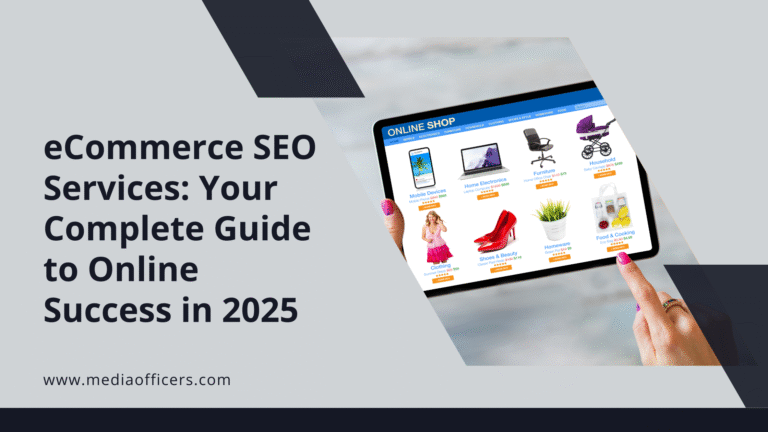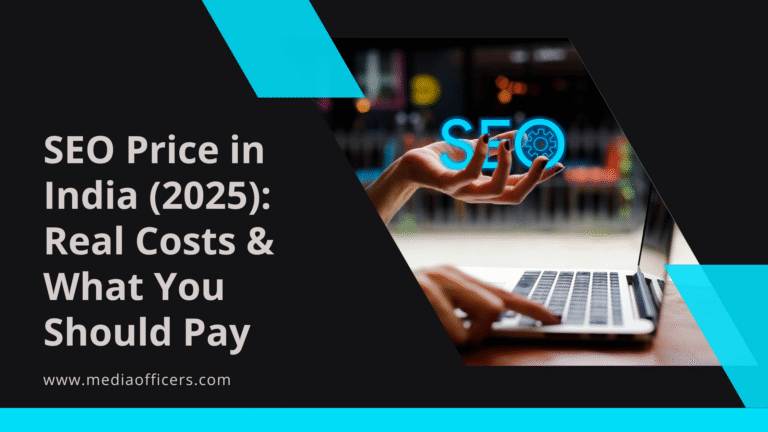|
Getting your Trinity Audio player ready... |
In the digital era, a robust online presence is essential for business success. A key element of this presence is SEO-friendly content. Search engine optimization (SEO) involves optimizing websites and content to achieve higher rankings in search engine results pages (SERPs).
SEO-friendly content is easily discoverable by search engines and more likely to appear prominently in search results for relevant queries. Creating SEO-friendly content is crucial for driving organic traffic to websites. Higher search result rankings increase the likelihood of users visiting a website, potentially leading to more leads, conversions, and revenue.
Furthermore, SEO-friendly content helps establish a website as a credible and authoritative source within its industry, enhancing brand reputation and trustworthiness. By understanding the importance of SEO-friendly content, businesses can effectively utilize search engines to reach their target audience and achieve marketing goals. This approach improves online visibility, attracts organic traffic, and increases the chances of ranking higher in search results.
Ultimately, SEO-friendly content is a fundamental component of a successful online presence and a competitive advantage in the digital landscape.
Key Takeaways
- SEO-friendly content is crucial for improving search engine rankings and driving organic traffic to your website.
- Conducting keyword research helps in identifying relevant and high-traffic keywords to target in your content.
- Optimizing on-page elements such as title tags, meta descriptions, and headers can improve the visibility of your content in search engine results.
- Creating high-quality and engaging content that provides value to the audience is essential for SEO success.
- Utilizing internal and external links in your content can improve website authority and help search engines understand the relevance of your content.
- Measuring and analyzing content performance using tools like Google Analytics can provide insights into the effectiveness of your SEO strategies.
- Updating and refreshing content regularly can help maintain its relevance and continue to drive SEO success over time.
10 powerful tips for creating SEO-friendly content that converts
1. Understand Your Audience
- Research and identify your target audience’s needs, preferences, and pain points. Use tools like surveys, social media, and analytics to gather insights.
2. Conduct Keyword Research
- Use keyword research tools to find relevant keywords and phrases that your audience is searching for. Focus on long-tail keywords to capture more specific queries.
3. Create Engaging Headlines
- Craft compelling headlines that include your primary keyword and grab attention. Use numbers, questions, or strong adjectives to increase click-through rates.
4. Optimize for On-Page SEO
- Ensure your content is optimized for on-page SEO by including keywords in the title, headers, meta descriptions, and throughout the content. Use appropriate internal and external links as well.
5. Write High-Quality, Valuable Content
- Focus on providing valuable, informative, and original content that addresses the needs of your audience. High-quality content encourages readers to stay longer and increases the likelihood of conversions.
6. Use Visuals and Multimedia
- Incorporate images, videos, infographics, and other multimedia elements to make your content more engaging and shareable. Visuals can enhance understanding and retention of information.
7. Implement Clear Calls to Action (CTAs)
- Include strong, clear calls to action that guide readers on what to do next. Whether it’s signing up for a newsletter, downloading a resource, or making a purchase, CTAs should be persuasive and relevant.
8. Ensure Mobile-Friendliness
- Optimize your content for mobile devices by ensuring your website is responsive and loads quickly. A mobile-friendly experience is essential for retaining users and improving rankings.
9. Utilize User Experience (UX) Best Practices
- Improve user experience by using clear formatting, bullet points, and subheadings to make your content easy to read. A clean layout with ample white space enhances readability.
10. Analyze and Update Your Content Regularly
- Regularly analyze your content’s performance using analytics tools. Update outdated information, improve underperforming content, and refresh keywords to keep it relevant and effective.
Conducting Keyword Research for Targeted Content
Conducting Keyword Research
There are several tools and techniques available to conduct keyword research. One popular tool is Google Keyword Planner, which provides insights into the search volume and competition for specific keywords. Additionally, there are other third-party tools such as SEMrush, Ahrefs, and Moz Keyword Explorer that can help identify relevant keywords and provide valuable data to inform your content strategy.
Understanding User Intent
In addition to using keyword research tools, it’s also important to consider user intent when selecting keywords for your content. Understanding what users are looking for when they enter specific search queries can help you create content that aligns with their needs and provides valuable information.
Benefits of Keyword Research
By identifying relevant keywords and understanding user intent, businesses can create content that resonates with their target audience and improves their chances of ranking higher in search results. Incorporating keyword research into your content strategy can help you attract more organic traffic to your website and achieve your marketing objectives.
Optimizing On-Page Elements for Search Engines

In addition to conducting keyword research, optimizing on-page elements is crucial for creating SEO-friendly content. On-page optimization involves optimizing various elements on a webpage to improve its visibility and relevance to search engines. This includes optimizing meta titles, meta descriptions, headings, URL structures, and image alt text.
By optimizing these on-page elements, businesses can improve their chances of ranking higher in search results and attracting more organic traffic to their website. When optimizing meta titles and descriptions, it’s important to include relevant keywords and compelling language that entices users to click through to your website. Additionally, using headings (H1, H2, H3, etc.) effectively can help organize your content and make it more scannable for both users and search engines.
Furthermore, creating descriptive and keyword-rich URL structures can also improve the visibility of your content in search results. Lastly, optimizing image alt text with relevant keywords can improve the accessibility of your content for users with disabilities and enhance its relevance to search engines. In conclusion, optimizing on-page elements is a critical aspect of creating SEO-friendly content.
By paying attention to meta titles, descriptions, headings, URL structures, and image alt text, businesses can improve the visibility and relevance of their content in search results. Incorporating on-page optimization into your content strategy can help you attract more organic traffic to your website and improve your overall SEO performance.
Creating High-Quality and Engaging Content
Creating high-quality and engaging content is essential for attracting and retaining the attention of your target audience. High-quality content not only provides valuable information but also demonstrates expertise and authority within your industry. Engaging content, on the other hand, captivates users’ attention and encourages them to interact with your website.
When it comes to SEO, high-quality and engaging content is more likely to be shared, linked to, and referenced by other websites, which can improve its visibility and ranking in search results. To create high-quality content, it’s important to conduct thorough research, provide accurate information, and offer unique insights that differentiate your content from competitors. Additionally, using multimedia elements such as images, videos, infographics, and interactive tools can enhance the engagement level of your content.
Furthermore, incorporating storytelling techniques and addressing pain points or challenges that resonate with your target audience can make your content more relatable and compelling. In summary, creating high-quality and engaging content is crucial for SEO success. By providing valuable information, demonstrating expertise, and captivating users’ attention, businesses can improve the visibility and ranking of their content in search results.
Incorporating high-quality and engaging content into your SEO strategy can help you attract more organic traffic to your website and establish a strong online presence within your industry.
Utilizing Internal and External Links for SEO
Utilizing internal and external links is an important aspect of SEO-friendly content creation. Internal links are hyperlinks that point to other pages within the same website, while external links point to pages on other websites. When used effectively, internal and external links can improve the structure of your website, distribute link equity, and provide additional context and credibility to your content.
Internal linking helps search engines understand the hierarchy and structure of your website while also distributing link equity throughout different pages. By strategically linking to relevant pages within your website, you can improve the visibility and ranking of those pages in search results. Additionally, internal linking can enhance user experience by guiding visitors to related or relevant content on your website.
External linking, on the other hand, provides additional context and credibility to your content by referencing authoritative sources or related information on other websites. When linking to reputable websites or sources that are relevant to your content, you can demonstrate credibility and provide additional value to your audience. Furthermore, external links can also help build relationships with other websites within your industry or niche.
In conclusion, utilizing internal and external links is essential for creating SEO-friendly content. By strategically incorporating internal links to improve website structure and user experience, as well as using external links to provide additional context and credibility to your content, businesses can improve the visibility and ranking of their content in search results. Incorporating internal and external links into your content strategy can help you attract more organic traffic to your website and enhance your overall SEO-Friendly Content performance.
Measuring and Analyzing Content Performance

Utilizing Analytics Tools for Insights
One popular tool for measuring content performance is Google Analytics, which provides valuable data on user behavior, traffic sources, conversions, and more. Additionally, there are other third-party tools such as SEMrush, Ahrefs, Moz, and BuzzSumo that offer insights into keyword rankings, backlink profiles, social engagement metrics, and competitive analysis.
Gaining a Comprehensive Understanding
By leveraging these tools and metrics, businesses can gain a comprehensive understanding of how their content is performing in search results and identify areas for improvement. In conclusion, measuring and analyzing content performance is essential for optimizing SEO strategies and achieving long-term success.
Informing Future Content Strategies
By tracking KPIs and leveraging analytics tools, businesses can gain valuable insights into how their content is resonating with their target audience and how it’s performing in search results. Incorporating measurement and analysis into your content strategy can help you make informed decisions about future content creation efforts and continuously improve your SEO performance.
Updating and Refreshing Content for Continued SEO Success
Updating and refreshing existing content is an important strategy for maintaining SEO-Friendly Content success over time. As industries evolve and user preferences change, it’s crucial to keep existing content up-to-date with the latest information and trends. Additionally, refreshing outdated or underperforming content can improve its relevance and visibility in search results.
One approach to updating existing content is to conduct regular audits of your website to identify outdated or underperforming pages. By analyzing metrics such as traffic trends, keyword rankings, bounce rates, and time on page, businesses can identify opportunities to refresh or improve existing content. This may involve updating statistics or data points, adding new insights or perspectives, incorporating multimedia elements such as videos or infographics, or addressing new pain points or challenges that resonate with your target audience.
In conclusion, updating and refreshing existing content is essential for maintaining SEO success over time. By conducting regular audits of your website and identifying opportunities to improve existing content, businesses can ensure that their website remains relevant and competitive in search results. Incorporating a strategy for updating and refreshing content into your SEO-Friendly Content efforts can help you attract more organic traffic to your website and achieve continued success in today’s dynamic digital landscape.
In conclusion, creating SEO-friendly content involves various strategies such as conducting keyword research, optimizing on-page elements, creating high-quality and engaging content, utilizing internal and external links, measuring performance analytics effectively updating existing content. By understanding the importance of these strategies businesses can improve their online visibility attract more organic traffic achieve their marketing objectives in today’s competitive digital landscape.
If you’re looking to boost your website’s performance with professional SEO audit services, you may want to check out this comprehensive guide on the best social media marketing company in Chandigarh. This article provides valuable insights into how to effectively utilize social media to enhance your online presence and drive traffic to your website. With the right combination of SEO-friendly content and strategic social media marketing, you can significantly improve your website’s performance and conversion rates. For more information on professional SEO audit services, visit mediaofficers.com.
Basic SEO-Friendly Content Tips
1. Keyword Research
- Identify Relevant Keywords: Use tools like Google Keyword Planner or Ubersuggest to find keywords that are relevant to your content and have a good search volume.
- Focus on Long-Tail Keywords: These are more specific phrases that can drive targeted traffic to your site (e.g., “best coffee shops in Surat” vs. “coffee shops”).
2. Optimized Title and Headers
- Create Compelling Titles: Incorporate your primary keyword in the title. Keep it catchy to attract clicks.
- Use Header Tags: Organize your content using H1, H2, and H3 tags. This not only improves readability but also helps search engines understand the structure of your content.
3. Meta Descriptions
- Write Effective Meta Descriptions: Include your primary keyword and a brief summary of your content. Keep it under 160 characters to ensure it displays properly in search results.
4. Quality Content
- Focus on Providing Value: Your content should be informative, engaging, and relevant to your audience. Aim for originality and avoid duplicating existing content.
- Maintain Readability: Use short paragraphs, bullet points, and simple language to make your content easy to read and understand.
5. Internal and External Links
- Link to Relevant Content: Use internal links to direct readers to other pages on your website. This helps with navigation and encourages users to explore more of your content.
- Cite Credible Sources: Include external links to authoritative websites to back up your claims and improve your content’s credibility.
6. Image Optimization
- Use Relevant Images: Include images that enhance your content. Ensure they are properly sized for fast loading times.
- Optimize Alt Text: Use descriptive alt text for images that includes relevant keywords to improve accessibility and SEO.
7. Mobile Optimization
- Ensure Mobile-Friendliness: Make sure your website is responsive and looks good on mobile devices. A large portion of web traffic comes from mobile users.
8. User Engagement
- Encourage Interaction: Invite readers to leave comments, ask questions, or share their experiences. This increases user engagement and can help improve your rankings.
9. Regular Updates
- Keep Content Fresh: Regularly update your existing content to ensure it remains relevant. This can improve your rankings and keep your audience informed.
10. Analytics Tracking
- Monitor Performance: Use tools like Google Analytics to track the performance of your content. Analyze metrics such as page views, bounce rates, and conversion rates to identify areas for improvement.

FAQs
What is SEO-friendly content?
SEO-friendly content is content that is created with the goal of ranking well in search engine results pages (SERPs). It is optimized for specific keywords and is designed to be easily understood by search engine algorithms.
Why is SEO-friendly content important?
SEO-friendly content is important because it helps websites rank higher in search engine results, which can lead to increased organic traffic. It also helps to improve the user experience by providing valuable and relevant information to visitors.
How can I create SEO-friendly content?
To create SEO-friendly content, you should start by conducting keyword research to identify relevant and high-traffic keywords. Then, you should incorporate these keywords naturally into your content, while also ensuring that the content is valuable, well-written, and relevant to your target audience.
What are some tips for creating SEO-friendly content that converts?
Some tips for creating SEO-friendly content that converts include focusing on the reader’s needs and providing valuable information, using compelling headlines and meta descriptions, optimizing images and multimedia, and including clear calls-to-action to encourage conversions.
What are some common mistakes to avoid when creating SEO-friendly content?
Common mistakes to avoid when creating SEO-friendly content include keyword stuffing, creating low-quality or thin content, neglecting to optimize for mobile devices, and failing to promote and distribute the content effectively.
Conclusion
Creating SEO-friendly content that converts is essential for driving traffic and achieving business goals in today’s digital landscape. By implementing the 10 powerful tips outlined, you can craft content that not only ranks well in search engines but also resonates with your target audience. This involves understanding user intent, optimizing for relevant keywords, and providing valuable information that addresses their needs.
Moreover, focusing on high-quality writing, engaging visuals, and effective calls to action can enhance user experience and increase conversion rates. Remember that SEO is not just about pleasing algorithms; it’s about connecting with real people. By continually analyzing performance metrics and adapting your strategies, you can ensure that your content remains relevant and effective over time.
Incorporating these strategies will not only improve your search rankings but also establish your brand as a trusted authority in your niche. As you invest in creating compelling, SEO-friendly content, you’ll pave the way for sustainable growth and success in your online presence.







